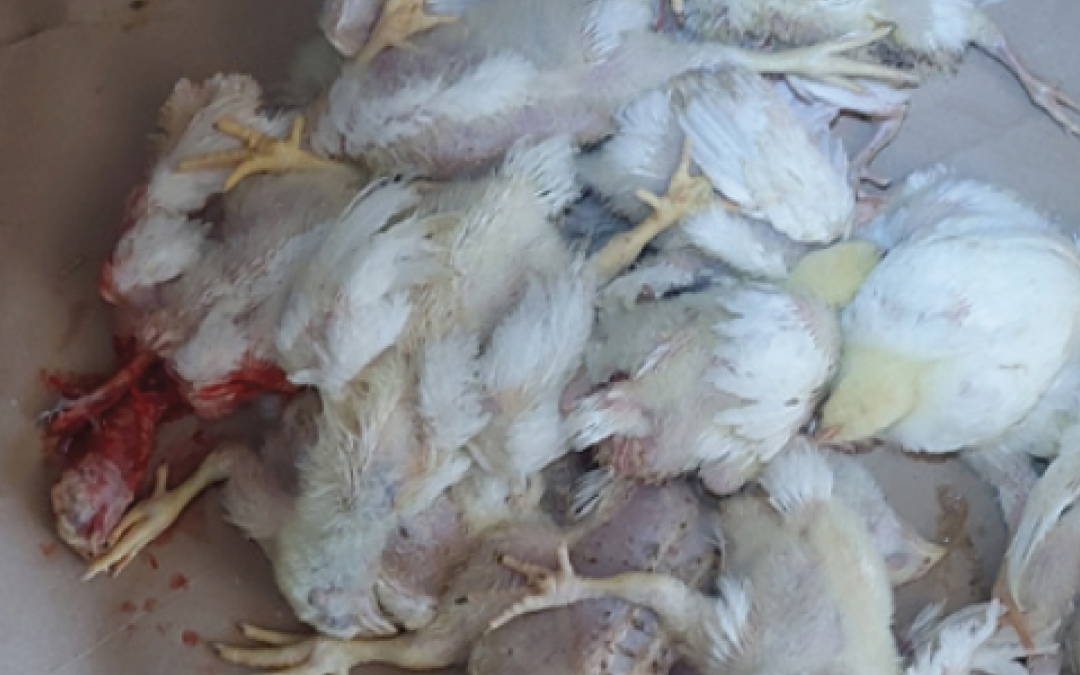By Tanka Khanal & Aline Pereira
Monogastric Nutritionists,
Grand Valley Fortifiers
Higher mortality rate in broilers production occurs due to a variety of causes, with early deaths typically resulting from yolk sac infection and other bacterial infections. At the onset of growth phase, mortalities are attributed to complex necrotic enteritis, other resistant infections, and faster pace of growth rate.

While mortalities at the end of cycle are commonly caused by ascites, again resistant pathogen infections, locomotory system disorders, and manage-ment failures such excessive stress or poor litter quality. Some of these late deaths are associated with condemnations at the processing plant. Genetic selection for higher appetite and fast-growing birds has led to a compro-mised health and increased susceptibility to pathogens. Moreover, this se-lection for a rapid growth has not been supported by a robust immune sys-tem and stronger physiological systems.
Not only the mortality, but the higher condemn rate is another significant determinant for poor farm profitability. Two stages of condemnation occur in a production cycle: one at farm level and the other at processing plant. At farm level, higher condemnation mostly related to poor chick quality, poor brooding management, poor quality feed and premix, compromised gut heath and poorer daily management. All these factors cause sick birds or lighter/smaller birds in the barn. At the processing plant, the primary causes for condemnation include abdominal edema, hepatis and non-infectious liver damage due to ascites, carcass contamination by E. coli and other fecal or litter bacteria, and subcutaneous inflammation/tissue infection and brises and contusion during catching and transportation.
How does the GVF Poultry Program reduce mortality and condemns?
In the GVF poultry team, we have a program approach, not just a formu-lation approach. What does this mean? It means we first understand the production system better, then we design a customised program for the producer followed by monitoring the KPIs (Key Performance Indicators) on regular basis until the program is successful.
To prevent early mortality, it begins at the breeder farm by ensuring good quality fertile eggs. Alongside quality eggs, implementing good manage-ment practices in the hatchery and providing quality nutrition and manage-ment during the initial weeks on the broiler farm This is essential to reduce mortality during this period. The swift provision of quality feed after hatching accelerates the maturation of the gut and gut-associated lymphoid tissue (GALT). Stimulating early development of the gastrointestinal tract is crucial, as approximately 70% of the bird’s immune system resides in or around the intestine, directly correlating with increased tolerance to pathogenic bacte-ria such as E. coli. As we know this, we implement an advanced nutritional approach to enhance internal immunity through high quality premix and balance ration formulation.
Another important mortality cause in modern birds is necrotic enteritis. Birds aged 14-35 days are affected by the rapid multiplication of Clostridium perfringens bacteria in the gut in certain conditions. This accelerated bac-teria growth is typically instigated by factors that disrupt the balance of gut microbiota or cause alterations in the gut epithelium, as seen in infections caused by Eimeria spp.
Nutrition plays a crucial role in preventing or influencing the disease’s pro-gression. Drastic changes in diet composition, such as transitioning phases, can promote bacterial proliferation. Additionally, high levels of antinutrition-al factors or undigestible nutrients especially amino acids in the feed create a beneficial environment for C. perfringens. Ingredients high in insoluble fiber contribute to increased diet viscosity, slowing nutrient passage and diges-tion. On the other hand, the utilization of probiotics, prebiotics, organic ac-ids, enzymes, and plant extracts aid in controlling C. perfringens growth. The use of enzymes can reduce gut viscosity in diets containing wheat or DDGS. The GVF poultry program carefully analyses this in a customised program for producers. That is why, we do not just replicate the feed formula, but we customise the program for the individual farm, it could be even a different program from barn A to barn B within the same farm.
Early fast-growth strains are more susceptible to ascites during the first weeks of life (3rd and 4th weeks), while late fast-growth strains become more vulnerable between the 5th and 7th week. As a result, measures to avoid predisposing factors should focus on these periods. Among the prima-ry predisposing factors, male sex, thermal stress, excessive physical handling, nutrition, and excess ammonia in the barn—diminishing pulmonary ventila-tion quality—are the most common. Nutritionally, protein-rich, low-fat diets, arginine supplementation, partial replacement of sodium chloride with so-dium bicarbonate to alkalize feed, and programs aimed at preventing ascites development are essential approaches in preventing ascites development.
Conclusion
Understanding the mechanisms for mortality and condemnation of broil-ers is the foundation for creating strategies tailored to each farm’s reality, not only focusing on body weight gain but also preventing mortality and condemnation at the same time to increase overall barn performance and hence profitability. At Grand Valley Fortifiers our tailor-made poultry program involves a series of measures involving management, nutrition, and health and is proving successful by better controlling mortality and condemnation across Canada. Our customers are benefitting from significantly less mortal-ity and condems compared to industry average mortality and condemna-tions. We are excited to have the opportunity to provide producers better profit per kilogram of live meat production. If you’re interested in reviewing your production numbers and determining if you can do better, reach out to Tanka or Aline at 519-621-4400 today.
This article was written for the Winter 2023 Central & Atlantic Poultry Grist. To read the whole Poultry Grist, click the button below.

